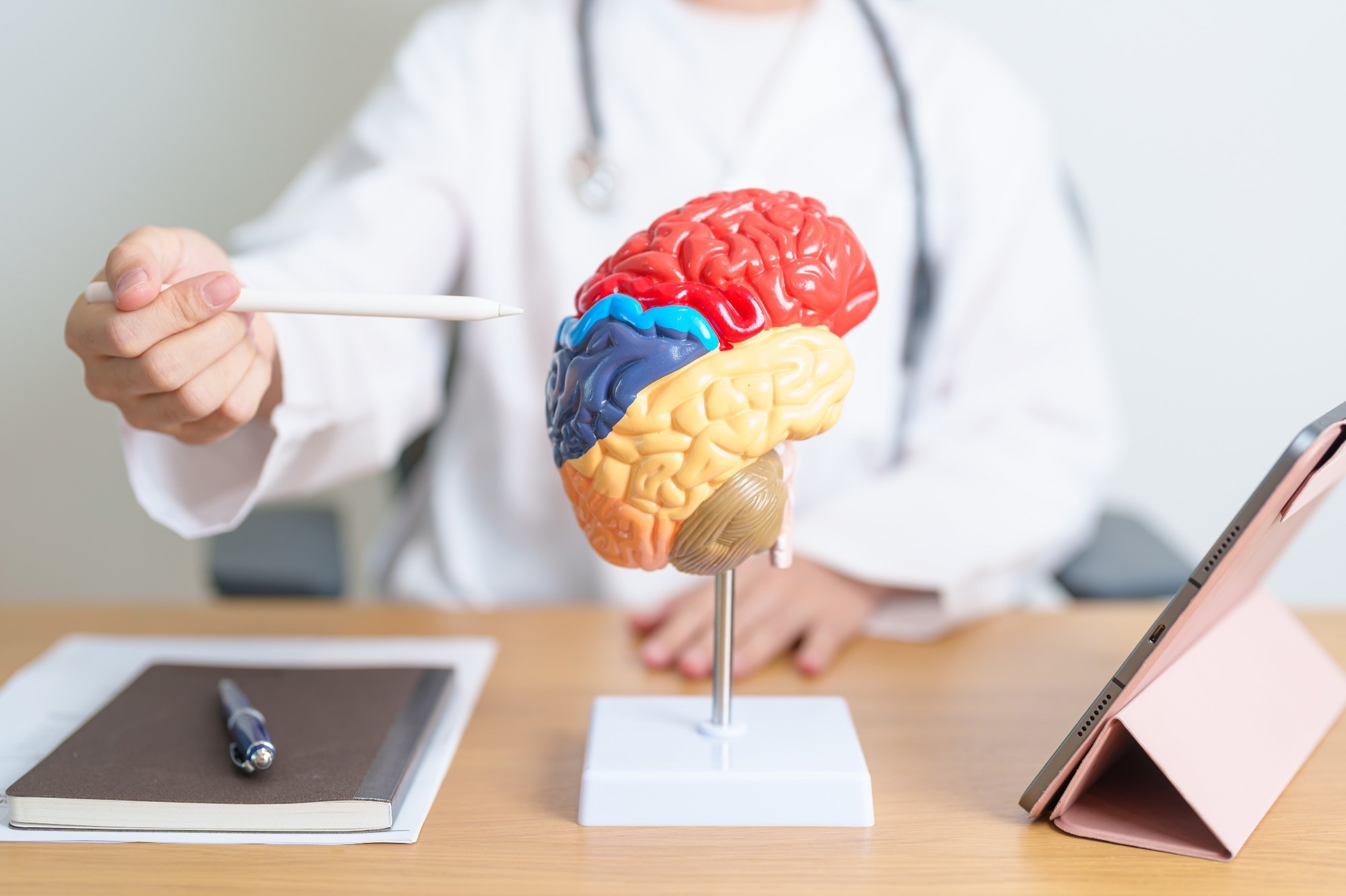Electrical stimulation has been widely used for treating tremors in patients with Parkinson’s disease. However, the modulation of neuronal signals is critical not only for treating circuit disorders but also for identifying functional circuits in the brain and understanding their links to various behaviors.
In a recent study published in Science Advances, researchers introduced a magnetogenetic system that uses magnetic fields to control brain cell activity.
They used murine models, delivered the system to specific areas of the mouse brain, and showed that the method could noninvasively activate or inhibit brain circuits.
 Study: Bidirectional regulation of motor circuits using magnetogenetic gene therapy. Image Credit: Jo Panuwat D/Shutterstock.com
Study: Bidirectional regulation of motor circuits using magnetogenetic gene therapy. Image Credit: Jo Panuwat D/Shutterstock.com
Background
Neuromodulation is an essential tool for studying animal behaviors, and various types of neuromodulation, such as electrical stimulation, have been used to treat symptoms of neurodegenerative disorders such as Parkinson’s disease.
Deep brain stimulation involving electrical impulses has been widely used for neuromodulation but is limited in its precision. Chemogenomics and optogenetics, respectively, use chemicals or light to offer better control but are either invasive or require drugs.
However, magnetic field-based stimulation offers a noninvasive method of controlling brain activity. Previous studies have used iron oxide nanoparticles, or the iron-storing protein ferritin coupled with transient receptor potential vanilloid type 1 (TRPV1) channels delivered using adenoviral vectors to the brain cells, but they have faced various limitations related to size and efficiency.
Neuroscience vs Neurology: What is the difference?
About the Study
The present study introduced a precise and reversible method to control deep brain activity in live mice using a ferritin-binding nanobody fused to a TRPV1 channel. They used adenoviral vectors to deliver the system to specific brain cells and then used magnetic resonance imaging (MRI) or transcranial simulation devices to activate specific brain circuits.
The ferritin-binding nanobodies were generated using immunization and screening methods in which a llama was immunized with ferritin from the human spleen over six weeks, and the lymphocytes were collected after 40 days to extract the ribonucleic acid (RNA).
The RNA was used to produce complementary deoxyribonucleic acid (cDNA), and polymerase chain reaction (PCR) was employed to amplify the ferritin-specific nanobodies, which were then cloned into a phagemid vector to form a library.
The library was screened to identify unique nanobodies, and the entire process was repeated for mouse ferritin. The nanobodies were then expressed in Escherichia coli, and the recombinant proteins were purified using metal affinity chromatography.
The nanobodies' affinity for ferritin was assessed using an enzyme-linked immunosorbent assay (ELISA), and further characterization was performed using immunoprecipitation assays, sodium dodecyl sulfate-polyacrylamide gel electrophoresis (SDS-PAGE), and mass spectrometry.
Additional functional assays included exposing the nanobody-expressing cells to magnetic fields to trigger calcium pathways. The nanobodies were also tested for their ability to trigger insulin release in cultured hepatic cells.
Furthermore, the characterization of the nanobody-expressing cells also included calcium imaging, immunocytochemistry, and electrophysiology. Additionally, the expression of TRPV1 was confirmed through immunocytochemistry and electrophysiological readings to measure cellular responses to stimuli such as voltage and capsaicin.
Various behavioral assessments were also conducted to examine locomotion and rotational behavior, and a video tracking analysis was performed to monitor the specific motor responses such as ambulation and freezing.
Neuronal activity during behavioral tasks under magnetic stimulation was monitored using fiber photometry. Brain sections were fixed after the behavioral studies to assess the effectiveness of vector transduction.
Study Findings
The study found that magneto genetics could effectively modulate neuronal activity in live, freely moving mice without the need for invasive implants. The method could activate or inhibit neurons in specific regions of the brain with anatomical and temporal accuracy and precision.
Furthermore, the study also demonstrated that the ferritin-nanobody coupled TRPV1 channel could be delivered using adenoviral vectors, which could then be used to control neuronal activity precisely through the use of magnetic fields. The magneto genetic activation in mice led to significant changes in motor behavior, such as reduced movement when specific neurons in the striatum were targeted.
This method not only improved over the temporal resolution offered by chemogenetics but provided a substantial advantage in circumventing the immunogenic and logistical constraints of the implants used in optogenetics.
The results also indicated that the method was effective over extended periods, with no toxicity due to repeated exposures to magnetic fields.
Furthermore, the development of a modified construct to inhibit instead of activating neuronal activity was found to be effective in controlling motor function in a mouse model of Parkinson’s disease by targeting the neurons in the subthalamic nucleus.
Moreover, existing technologies such as transcranial magnetic stimulation and MRI could be used to induce the necessary strength of the magnetic field, providing a long-lasting, non-invasive method of neuromodulation with a wide range of potential applications.
What Role does Deep Learning Play in Neuroscience?
Conclusions
Overall, the findings supported the effectiveness of magneto genetics as a tool for noninvasively controlling brain circuits.
The use of magnetic fields to activate or inhibit neuronal activity offers safer and longer-lasting options for neuromodulation. It has various applications, including pain management and controlling tremors in Parkinson's disease patients.
Journal reference:
-
Unda, S. R., Pomeranz, L. E., Marongiu, R., Yu, X., Kelly, L., Hassanzadeh, G., Molina, H., Vaisey, G., Wang, P., Dyke, J. P., Fung, E. K., Grosenick, L., Zirkel, R., Antoniazzi, A. M., Norman, S., Liston, C. M., Schaffer, C., Nishimura, N., Stanley, S. A., & Friedman, J. M. (2024). Bidirectional regulation of motor circuits using magnetogenetic gene therapy. Science Advances, 10(41), eadp9150. doi:10.1126/sciadv.adp9150. https://www.science.org/doi/10.1126/sciadv.adp9150